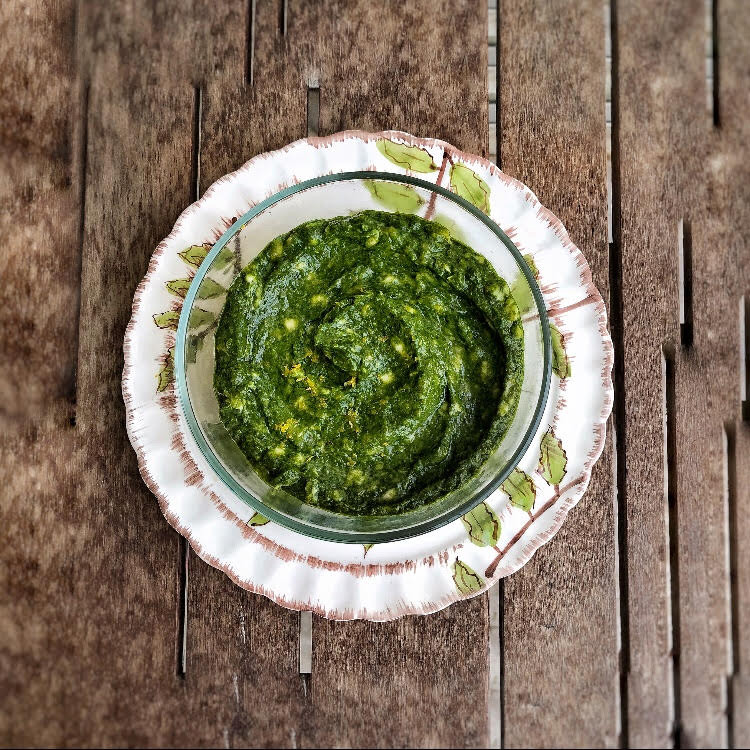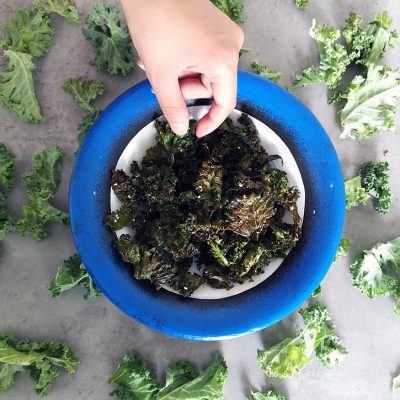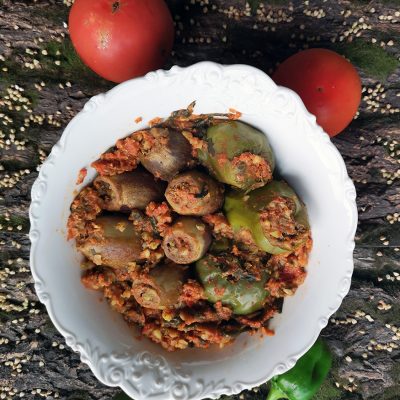Ingredients
-
1 Cup Kale puree
-
1 Cup banana puree
-
1 Tsp. nutmeg powder
-
1 Tsp. freshly ground cinnamon
-
1 Tsp. freshly grated turmeric
-
Grated orange zest
Directions
Pairing vegetables and fruits is sometimes neglected, although some fruits and vegetables, if combined, will result in a power food that you and your child will love and benefit from.
Once you are used to the concept of cooking your baby’s meals, it is very easy to start exploring different combinations and tastes. In fact, combining food will result in allowing the child to have an array of flavors that will narrow his/her possibility of becoming picky eaters in the future.
From the super combos that work best:
- Avocado and Carrots: both taste incredible together. However, eating both combined can result in a better absorption of the vitamin A in carrots.
- Avocado and tomato: tomatoes are rich in Lycopene, a powerful antioxidant that is heart-healthy and lower cancer risks. Fats like avocado make lycopene more bioavailable (the degree of the nutrient to be available for absorption and utilization by the body).
- Kale and banana: allows your baby to take the amazing benefits of Kale while enjoying the sweet taste of banana. In addition, bananas contain a small amount of fat and zinc that when both are available; they can result in more bioavailability of vitamin A.
Now that you know that weird combinations can be sometimes amazing ones. Let’s get serious!
There have been numerous discussions about the suitable age for the introduction of Kale. Some scientists say baby can eat kale between 6-8 months and some advice to be introduced only after 8 months of age. Due to the presence of nitrate in Kale, Teeny-tiny co. recommends it to be introduced starting 8 months of age.
To make it simpler, all leafy greens contain two components that are somehow unfavorable to the baby body “Nitrates and Oxalates”.
Nitrate is a type of salt that causes the Baby Blues Syndrome if ingested in high quantity and in babies less than 6 months old. Because unlike adults, babies do not have the means to convert nitrate into its byproduct until their digestive tract is developed at 6 months old and above.
Oxalates are naturally occurring substances found in plants. These include leafy greens, vegetables, fruits, cocoa, nuts, and seeds. Oxalates are called antinutrients because once consumed, oxalate can bind to minerals to form compounds, including calcium oxalate and iron oxalate. For most people, these compounds are then eliminated in the stool or urine decreasing the presence and absorption of these important minerals.
A simple way to decrease nitrate and oxalate level in leafy greens is Steaming. Steaming allows the oxalate and nitrate to leach out of the plant into the steaming water. Once done, discard the water that you steamed with, and add new water to puree those vegetables.
Although kale does have trace amount of oxalates (just like spinach), kale has only 2 mg of oxalate per 1 cup vs. 656 mg of oxalate in 1 cup of spinach. Additionally, kale, may have enough vitamin C to protect us completely against the nitrates they contain.
Kale is considered the Queen of leafy greens; it contains high amounts of Vitamin K, vitamin C, vitamin A, vitamin B6, Folate, Fiber, manganese. Kale has higher calcium content than Cows milk per 100 grams (150mg vs. 125mg). In addition, studies showed that calcium available in kale is 25% more bioavailable than the calcium from milk. So babies can get a lot of calcium needed for their healthy bones and teeth just by eating Kale.
Before giving your baby this recipe, I would like to stress on the importance of introducing vegetables first as they are: introduce a basic Kale puree to your baby for him/her to be familiarized with the taste and accept it as it is; Simple and nutritious. After that, you can combine it with any flavor you want.
Recipe:
- Yield: 6 meal portions, 5 TBSP. each.
- Calories per portion: 80 calories each.
- Cooking time: 10 minutes.
- Preparation: 5 minutes.
Steps
|
1
Done
|
Cut the stem of kales and use only the leaves. |
|
2
Done
|
In a steamer, steam Kale leaves between 9-10 minutes. |
|
3
Done
|
When done, discard of the water and blend till smooth. |
|
4
Done
|
If you feel the texture is dry or not smooth as required, add a small amount of water and continue blending. |
|
5
Done
|
In a bowl add one cup of banana with the rest of the ingredients and mix thoroughly. Storage: fill each portion in a freezer airtight container and freeze. It can last up to 6 months. Tip: this recipe is perfectly served as breakfast. |








